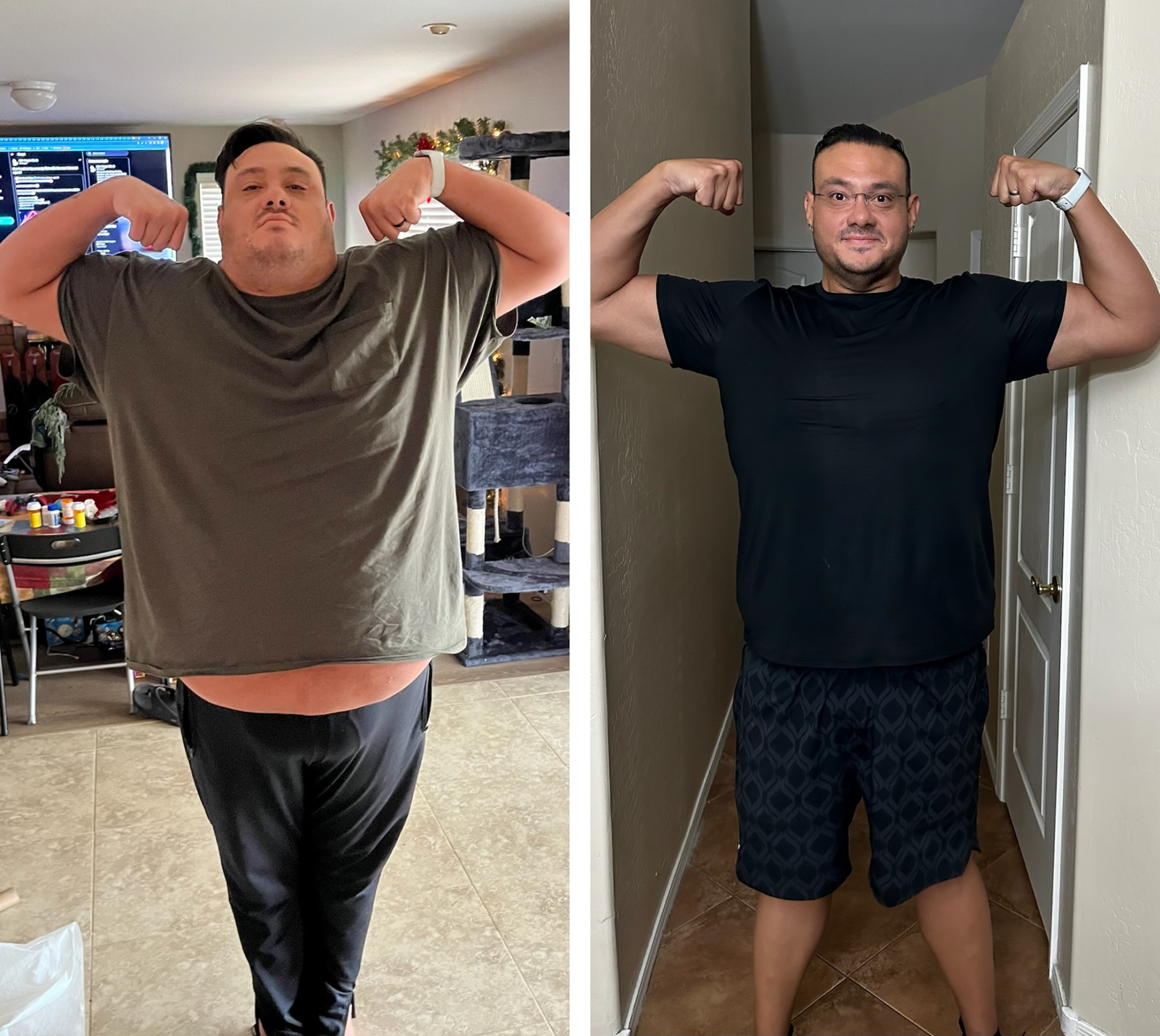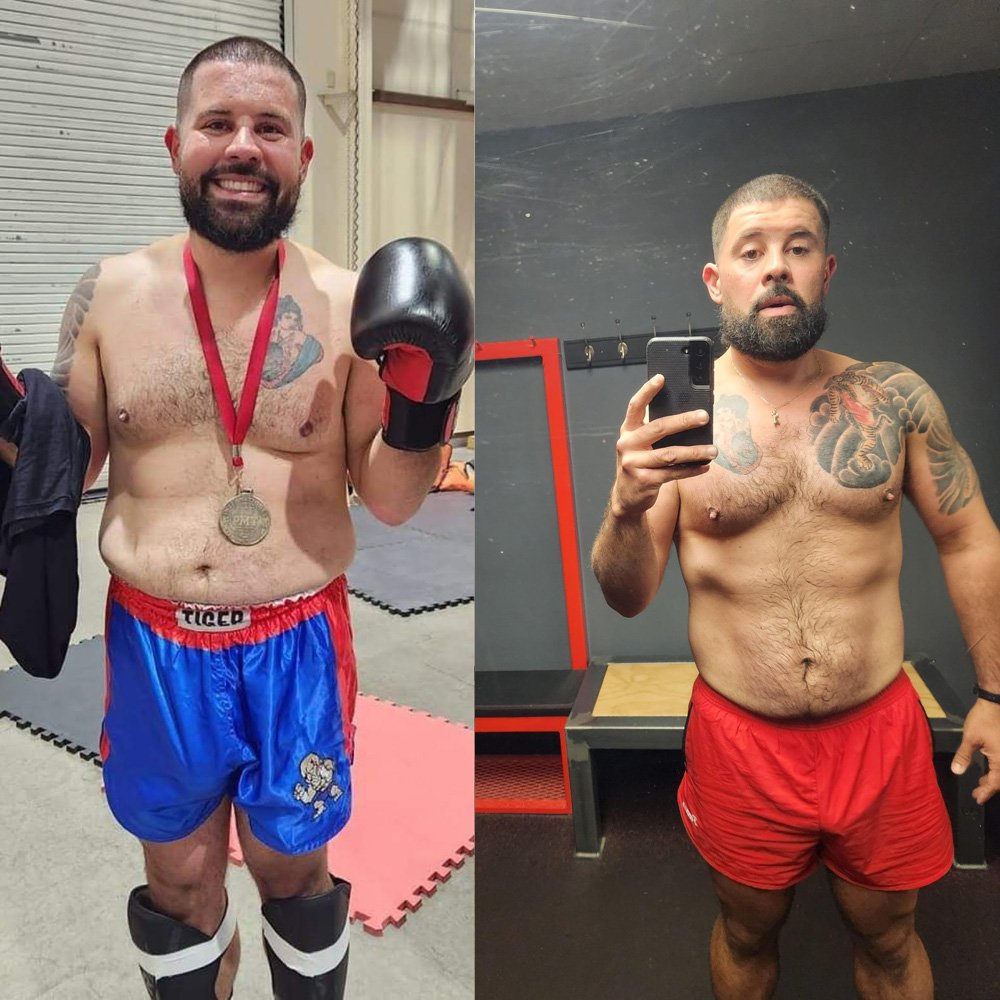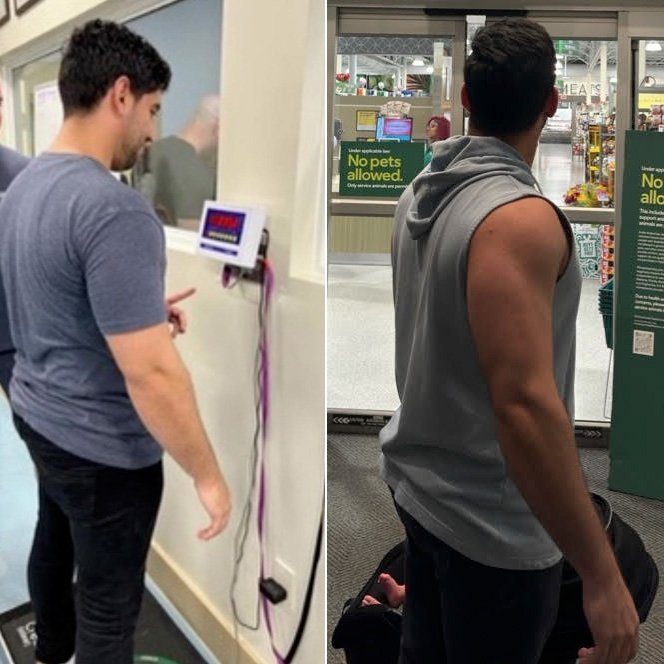Testosterone is the primary male hormone responsible for developing important physical characteristics in men, such as muscle growth, sex drive, facial hair, and weight distribution. When testosterone levels decline due to age or other factors, it can cause men to exhibit a range of unwanted symptoms, such as decreased muscle mass, low libido, joint inflammation, and increased body fat.
One in particular, gynecomastia, can have a significant impact on a man’s bodily appearance, self-esteem, and mental health. In this article, we’ll discuss testosterone’s effect on gynecomastia, how to recognize the symptoms before they start, and several ways to address the condition with or during TRT treatment.
Understanding Gynecomastia
Gynecomastia (also referred to as gyno) is a medical condition where a hormone imbalance of testosterone and estrogen prompts the enlargement of male breast tissue. In a more informal setting, you may have heard this commonly referred to as “man boobs.” Now, don’t freak out. Given that gynecomastia is a hormone-related medical condition, this can happen to any male at any age for various reasons. However, it usually occurs as hormones develop or fluctuate in males during the newborn, adolescence, and middle age phases.
Much of the time, gynecomastia is commonly found more prominent during puberty as enlarged male breast tissue starts to appear in boys due to hormonal changes in the body. As they transition through the pubertal stage, the amount of breast tissue may be similar in both breasts or, in certain instances, more prominent in one breast than the other. For many adolescent males, this can be a source of embarrassment and even pain, as the enlarged breast tissue can be very sensitive to touch. Usually, for most young males, the condition will usually resolve itself over time without needing treatment.
However, as men age, there’s a chance that they can develop onset gynecomastia later in life as a result of a sudden hormone imbalance. This can be caused by a number of medical conditions, including:
- Thyroid disease
- Adrenal tumors
- Kidney failure
- Liver disease
- Obesity
- Testicular cancer
Gynecomastia can also be caused by certain medications used to treat other medical conditions, such as:
- Anxiety
- Depression
- Bacterial and fungal infections
- Enlarged prostate
- Male infertility
- Peptic ulcers
Symptoms of Gynecomastia
There are various symptoms that occur as a result of gynecomastia, which include:
- Swollen breast tissue
- Increased nipple sensitivity (especially when rubbing against clothes)
- Discharge from the nipple of one or both breasts
- Fever and chills
Can Low Testosterone Cause Gynecomastia?
Testosterone and estrogen are the hormones responsible for controlling sex characteristics in human anatomy. While testosterone regulates male traits such as body hair and muscle mass, estrogen works to develop several important female characteristics, including breast growth. Although estrogen is primarily viewed as a female hormone and testosterone is technically considered the male hormone, both are present in each gender. The only difference is men tend to produce higher amounts of testosterone, and women release higher amounts of estrogen.
However, despite having lower amounts of estrogen than women, men still rely heavily on estrogen to manage many biological and physical functions, such as the development and maintenance of bone growth, managing head and eye coordination, controlling your sex drive, providing the ability to have an erection, and even assisting in sperm production.
But that all changes during a hormone imbalance, such as low testosterone. Typically, when testosterone levels start to decline and fall below normal parameters, estrogen levels will also begin to rise. Once a man’s testosterone levels are significantly lower than his estrogen levels, the body is unable to maintain a man’s essential physical functions and traits, and the increased estrogen-to-testosterone ratio eventually leads to the development of enlarged breast tissue.
Feeling Run-Down?
Take the Low-T Quiz Today
Our men’s clinic can restore your physiology, change your body composition and optimize your health to slow down aging and prevent health complications caused by low testosterone.
Take back your life and become a better you today!
How Is Gynecomastia Treated?
For adolescents who develop gynecomastia due to normal hormonal changes during puberty, periodic check-ups may be recommended to assess whether the condition is improving. As previously mentioned, these cases of gynecomastia usually resolve themselves on their own after a few months or years without any treatment. However, if gynecomastia is caused by a medical condition such as malnutrition, hypogonadism, or cirrhosis, then it may be necessary to treat the underlying health issue in order to correct the breast enlargement.
If it turns out that a specific medication is the suspected cause of gynecomastia, a doctor may suggest either stopping the medicine or substituting it with an alternative.
If gynecomastia does not improve or causes significant discomfort, pain, or embarrassment, other medicated treatment may be necessary. A physician may prescribe medications like aromatase inhibitors or estrogen blockers to help reduce the enlarged breast tissue. Commonly used to help treat breast cancer, aromatase inhibitors such as Arimidex work to lower estrogen levels by blocking aromatase, an enzyme that converts testosterone and other hormones into estrogen during times of hormone imbalance. Other estrogen blockers like selective estrogen receptor modulators or SERMs, like Tamoxifen, bind to estrogen receptors to keep estrogen hormones from attaching to each other and increasing estrogen levels.
Surgery may also be recommended if enlarged breasts remain significant and bothersome after initial observation or treatment. There are two surgical options for gynecomastia: liposuction, which removes breast fat but not the gland tissue, and mastectomy, which removes the gland tissue. Out of the two procedures, mastectomy is usually the more popular option since it only requires small incisions, allowing patients to recover faster.

How to Prevent Gynecomastia While on Testosterone
Although having a higher testosterone-to-estrogen ratio can help prevent gynecomastia, using testosterone replacement therapy (TRT) to increase your testosterone can also lead to elevated estrogen levels, which may inadvertently cause gynecomastia as a side effect.
If breast enlargement develops during TRT, your physician may prescribe the addition of aromatase inhibitors to keep your estrogen levels in check. Typically, many physicians prefer to prescribe Arimidex since it is usually more effective in lowering estrogen levels to help prevent gynecomastia. However, some doctors may prescribe Tamoxifen, as it can inhibit estrogen from elevating and provide relief from the discomfort that comes with male breast enlargement.
Peculiarities of Gynecomastia Treatment in Men on TRT
Although high levels of estrogen can cause men to exhibit low testosterone symptoms such as gynecomastia, the hormone is still essential to the development of certain male characteristics and physical functions, so using aromatase inhibitors to block estrogen production can also cause some adverse side effects, such as:
- Migraines or headaches
- Low energy
- Joint pain
- Insomnia
- Excessive sweating
- Fatigue
- Hair loss
- Weight fluctuations
- Nausea
Aromatase inhibitors like Arimidex may also cause side effects such as high cholesterol and osteoporosis, which may require additional treatment. Taking estrogen receptor modulators such as Tamoxifen can also cause gastrointestinal issues, increased risk of blood clotting, and cardiovascular complications. Some side effects, such as nausea, vomiting, and low energy levels, usually subside after a few weeks of using estrogen-blocking medications. However, if these issues persist, make sure to inform your physician immediately so they can provide recommendations to help manage your symptoms.
At Renew Vitality, we provide testosterone replacement therapy to help adults struggling with gynecomastia as a result of low testosterone. Our experienced staff of physicians focuses on combining testosterone treatments with safe and effective estrogen blockers to maintain balanced hormone levels so you can avoid developing enlarged breast tissue as you progress through treatment. Contact us at 1-866-995-2371 and schedule a consultation at any of our TRT clinics in the United States to find out more about how our treatments can help you prevent and eliminate gynecomastia.
























